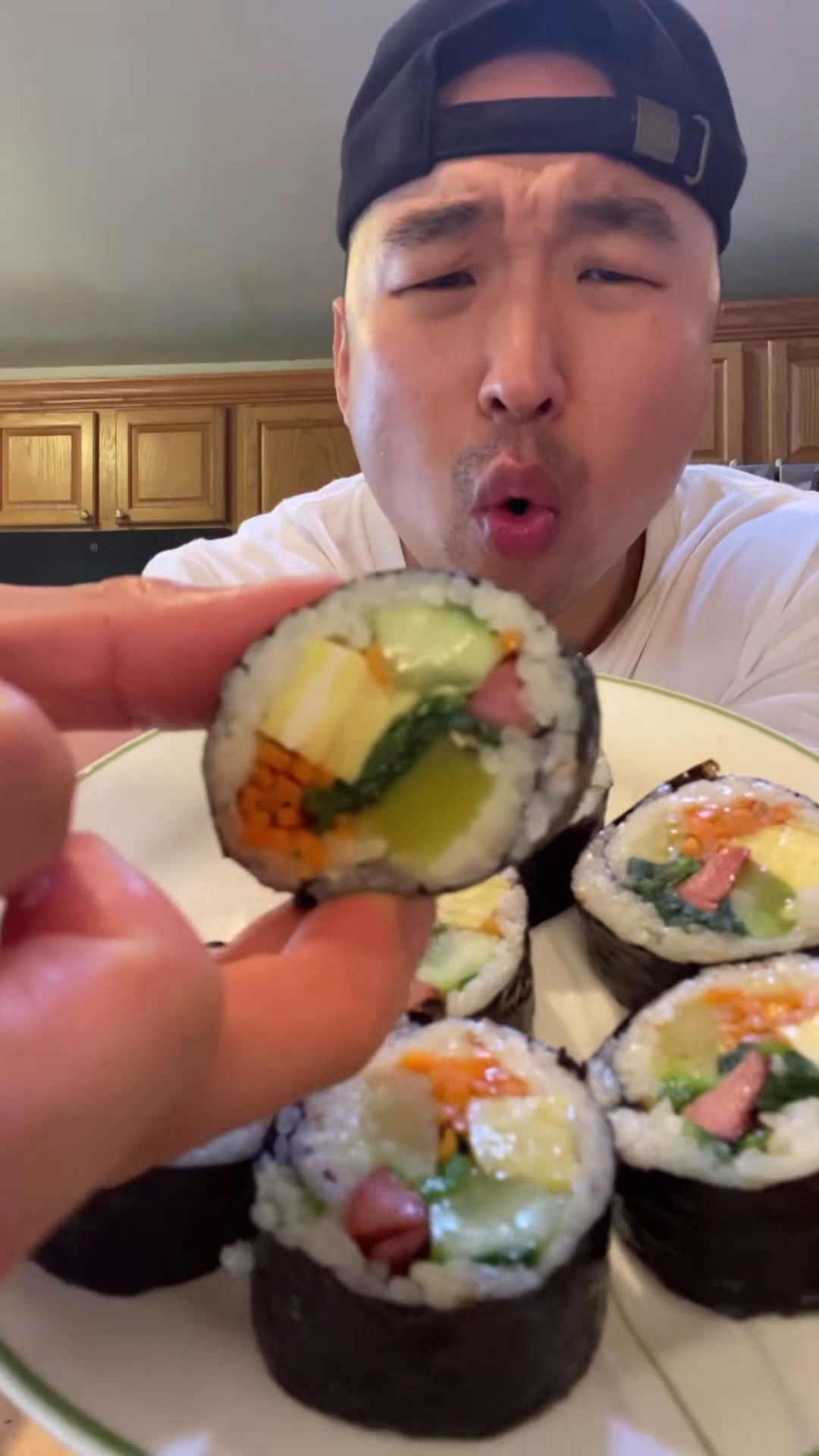
Kimbap: The ultimate portable meal! This delicious “Korean sushi” is packed with rice, protein, and vegetables, making it the perfect on-the-go snack for picnics, trips, and more.
One of the things that I love about Kimbap is that it is very versatile. You can put whatever filling you’d like. Meat, tuna, or keep it vegetarian, make it according to your heart’s desire!
Another thing I love is that it yields a lot. With the several ingredients you have in hand, you can make several rolls which makes it great for sharing with family or friends when you gather for a meal or special occasion.
There are many ways to prepare this classic Korean dish, and here I’ll share tips and tricks so that you can make the most satisfying results that are both flavorful and visually appealing.
Seasoned Rice
Disclaimer: I get a small commission at no additional cost to you when you make a qualified purchase under the affiliate links.
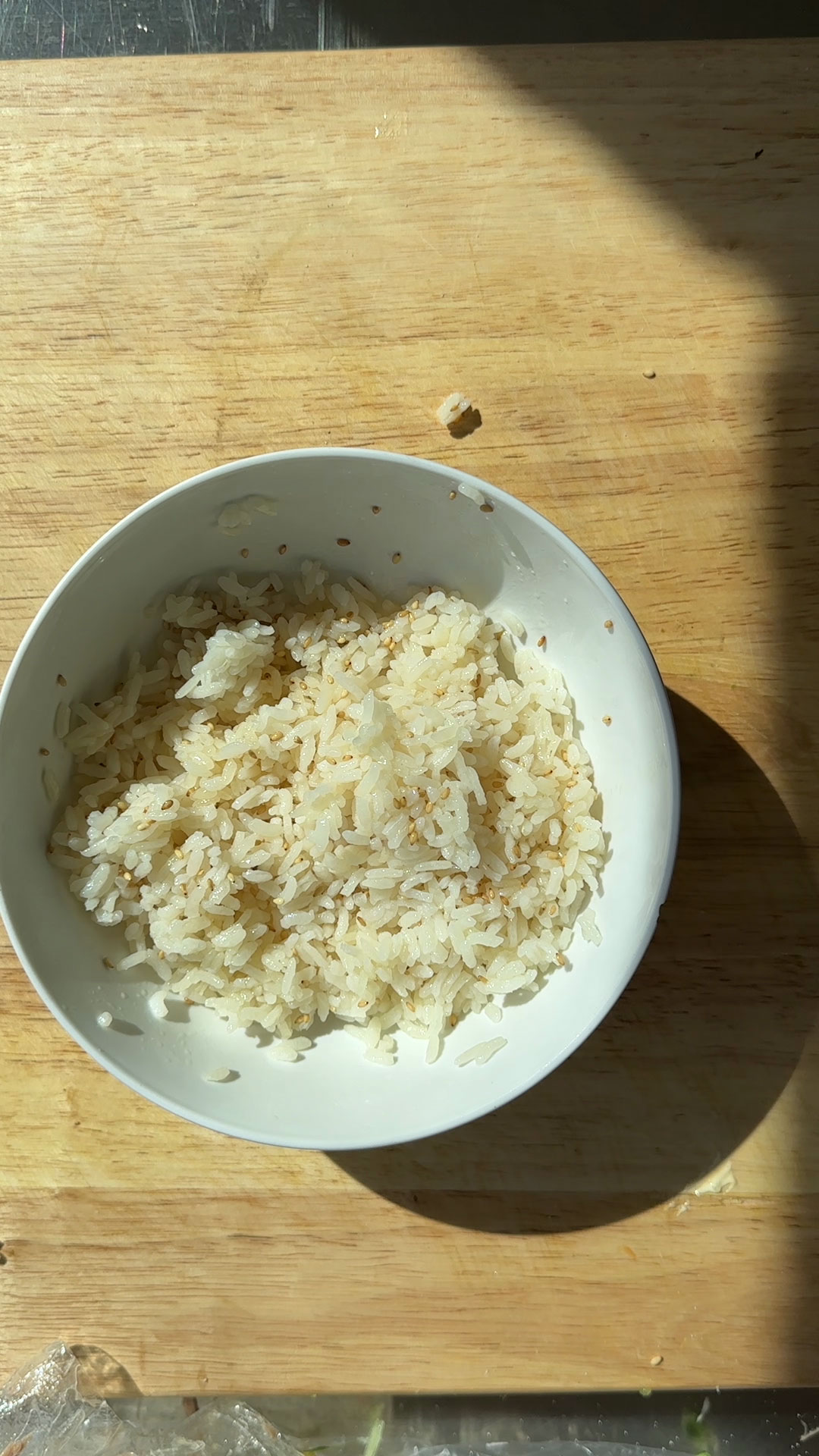
One of kimbap’s most important aspects is sesame oil’s savory and nutty taste. It’s pretty much like how olive oil is to Italians. For kimbap, you use it to season the rice and coat the whole roll. No matter what you put inside, the taste of the sesame oil should be one of the prominent tastes you must get from the kimbap.
No special rice is needed in making this. But you do need to cook the rice a little bit on the sticky side for it to hold. Season it while it is warm, and let it cool a bit before placing it in the seaweed. The temperature should be just right because using hot rice would break the seaweed, and putting cold rice will make it too dry.
TIP: As you prepare the ingredients, always season gradually. You can always add, but you cannot remove if you overseason.
Proteins
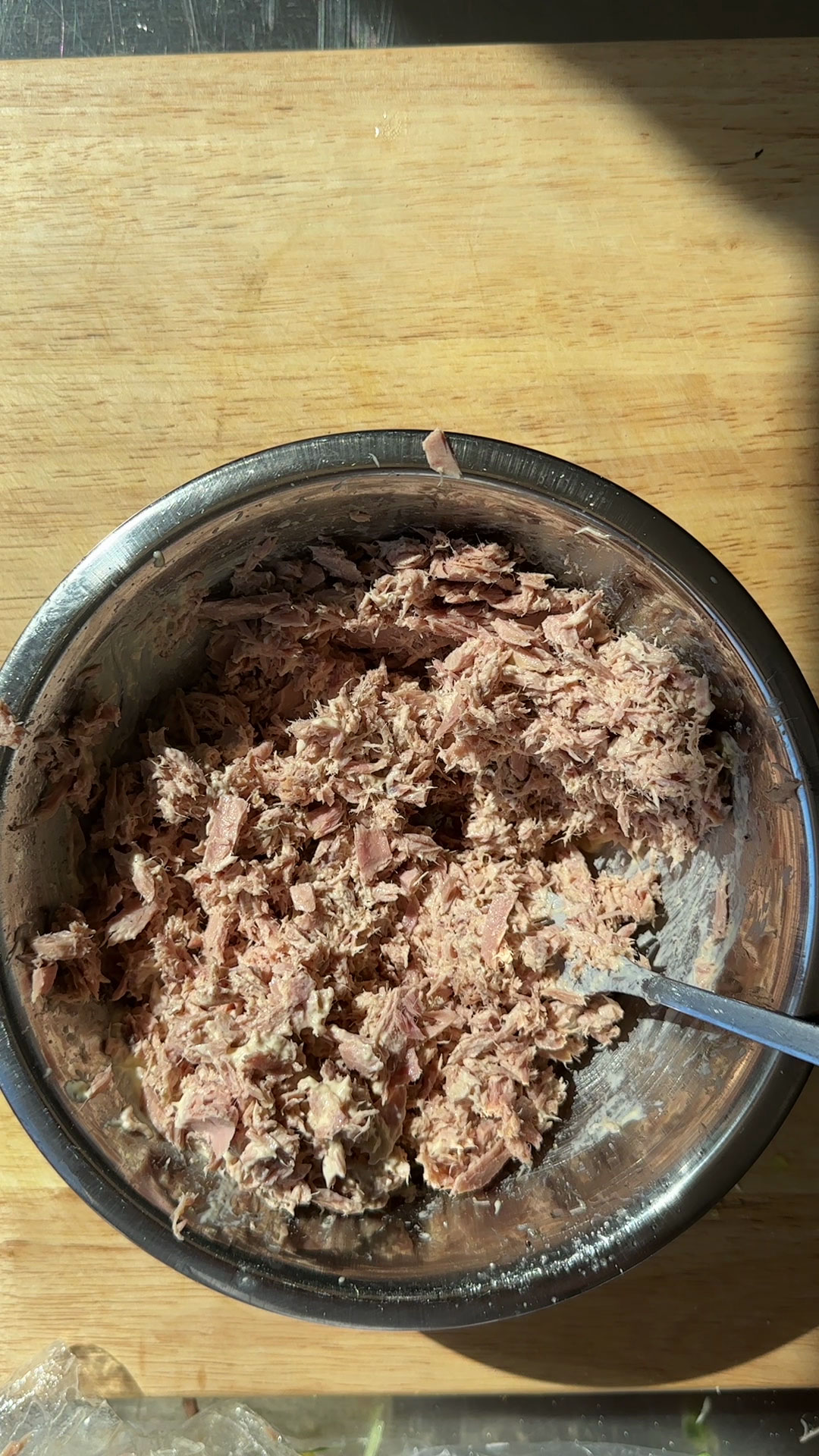
The protein component of classic kimbap usually features crab sticks, eggs, and a choice between Korean ham, sausage, beef, fishcake, or tuna with mayo. This combination is flexible, enabling you to add or remove ingredients based on your preferences. Keep in mind that incorporating pork or beef can significantly enhance the overall flavor profile and indulgence of the roll.
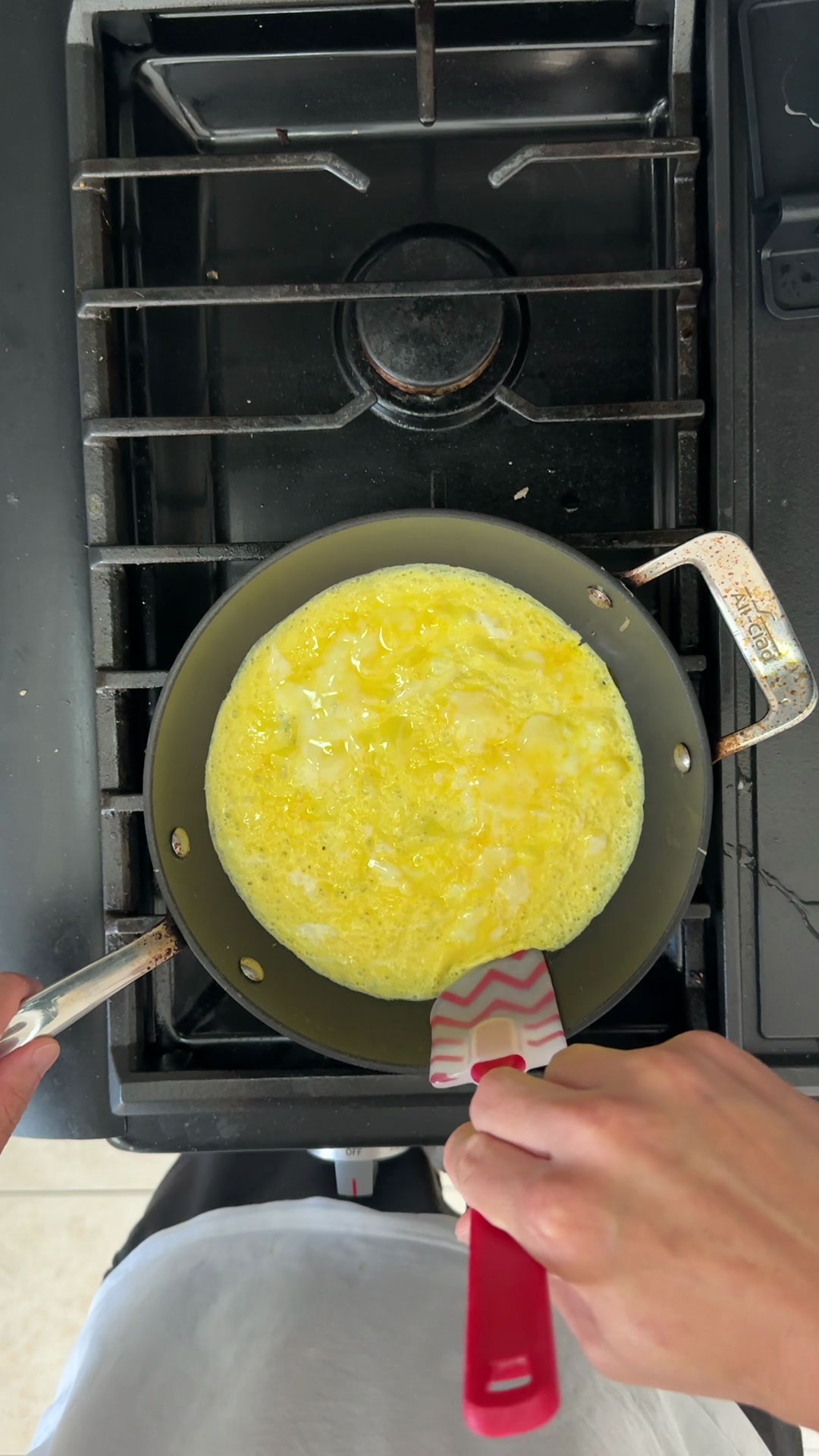
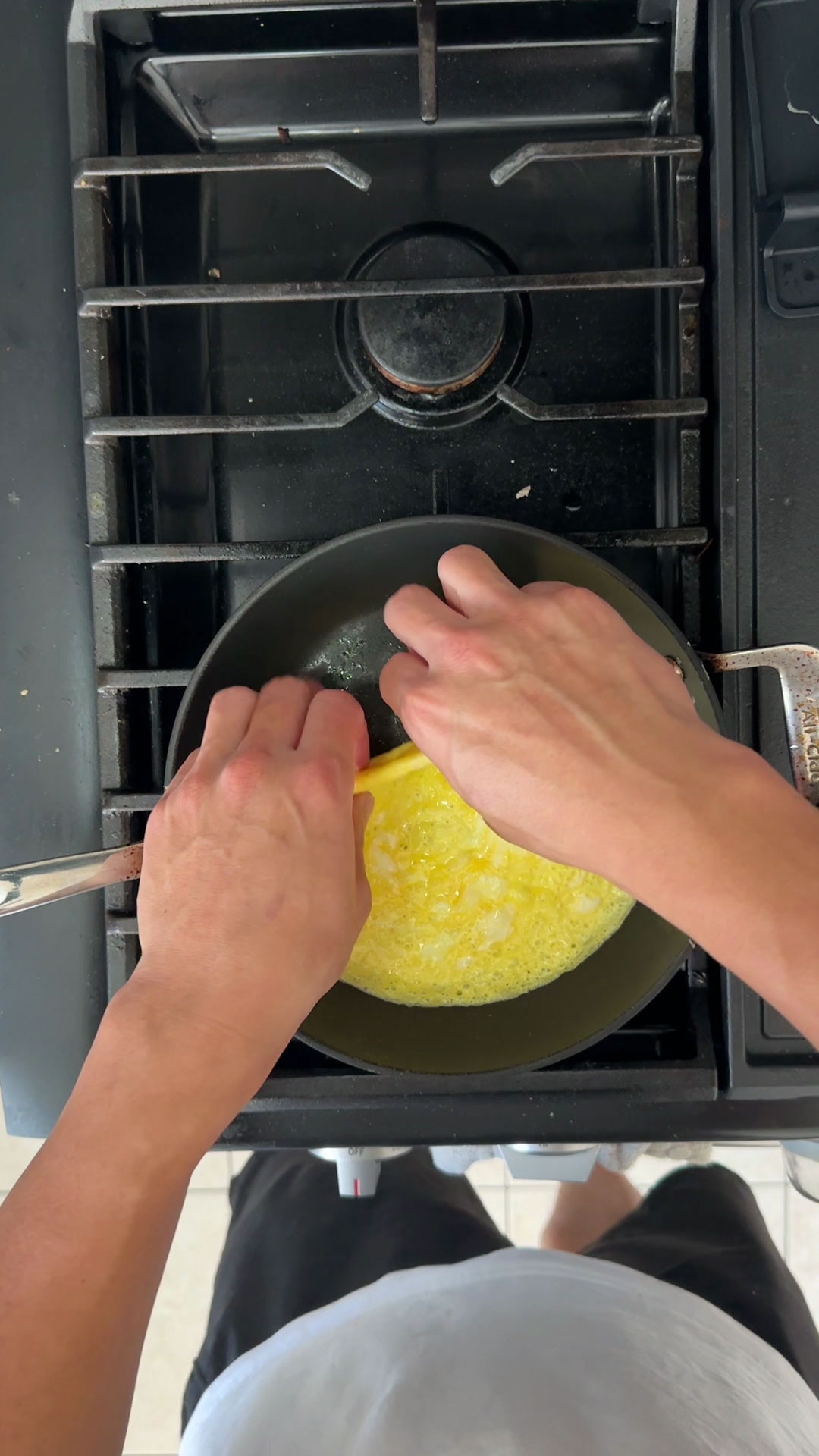

One of the most common questions I get asked is how to make the eggs for kimbap.
- First, scramble eggs, heat up the pan, and add a bit of oil.
- Now pour a small amount of egg and spread it out to the edges, then let it cook.
- Using a spatula unstick the edges of cooked egg from the pan, and carefully flip it. Make sure to use a nonstick pan to make this step easier, and I find that using your hands to flip also makes this easier. Although, be careful with the heat!
- Once the other side is also cooked, stack the egg sheets together, roll them, and slice them into strips.
- Fluff the eggs and generously use them in the kimbap.
Vegetables
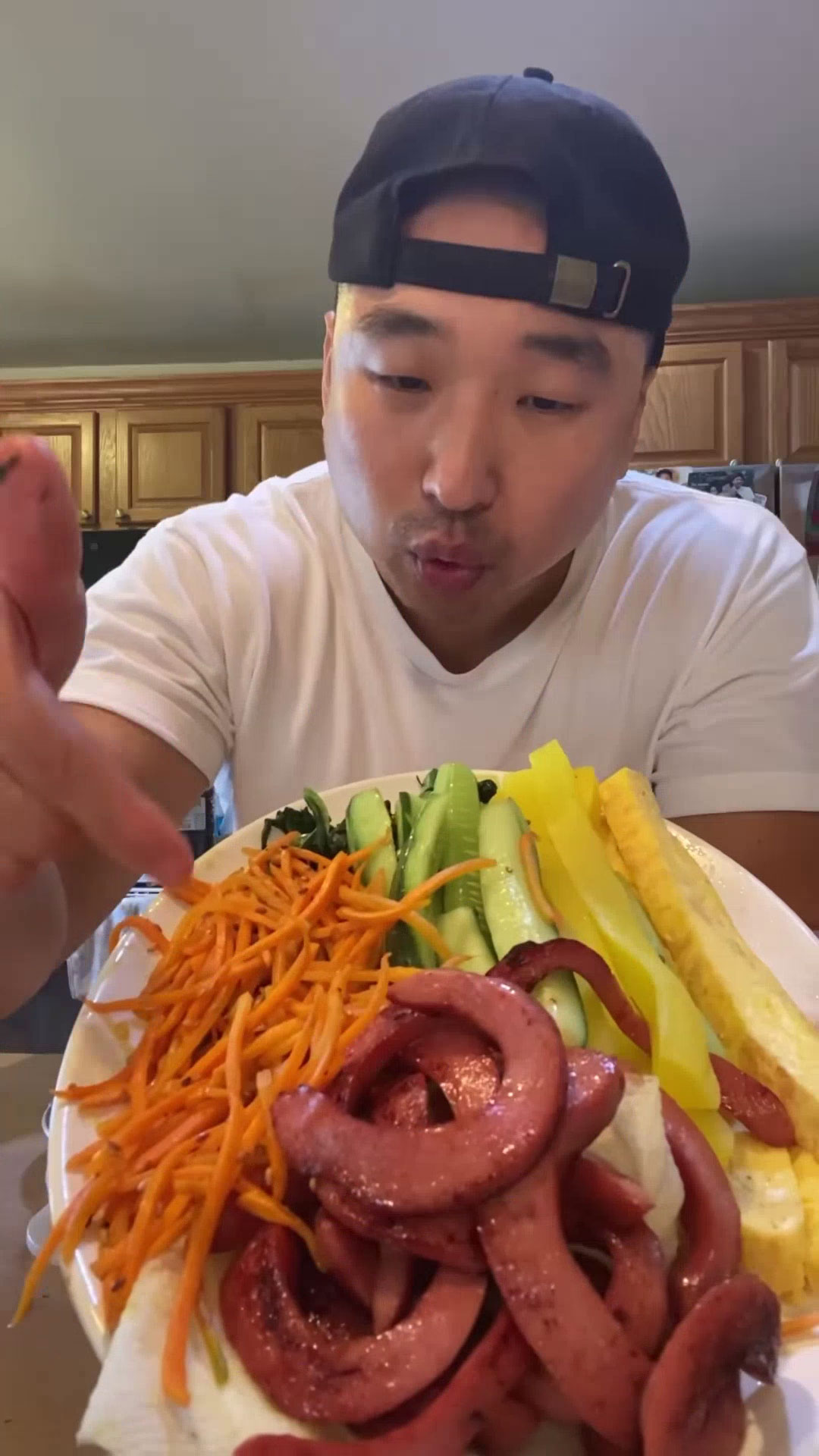
The choice of vegetables for kimbap is also extensive and allows customization to suit individual preferences. Consider using a range of colors and textures of veggies to ensure they come out beautiful.
- Cucumber: Remove the seeds and slice it julienne
- Carrots: Slice it julienne, saute for a couple of minutes, and season with salt and sesame oil
- Spinach: Blanch, drain, and season with salt, sesame oil, and sesame seeds
- Pickled Radish or Danmuji: Use danmuji that has are sliced into strips, this is usually available in Korean markets. While there are many vegetables in kimbap, this one cuts through and perfectly complements the savory taste of the seasoned rice.
- Other vegetables you can add: Burdock Root, Seasoned Cabbage, Kimchi, Perilla Leaves, etc.
Packing It All Together
In making kimbap, you roll everything into the dried seaweed. Several tips to make it work:
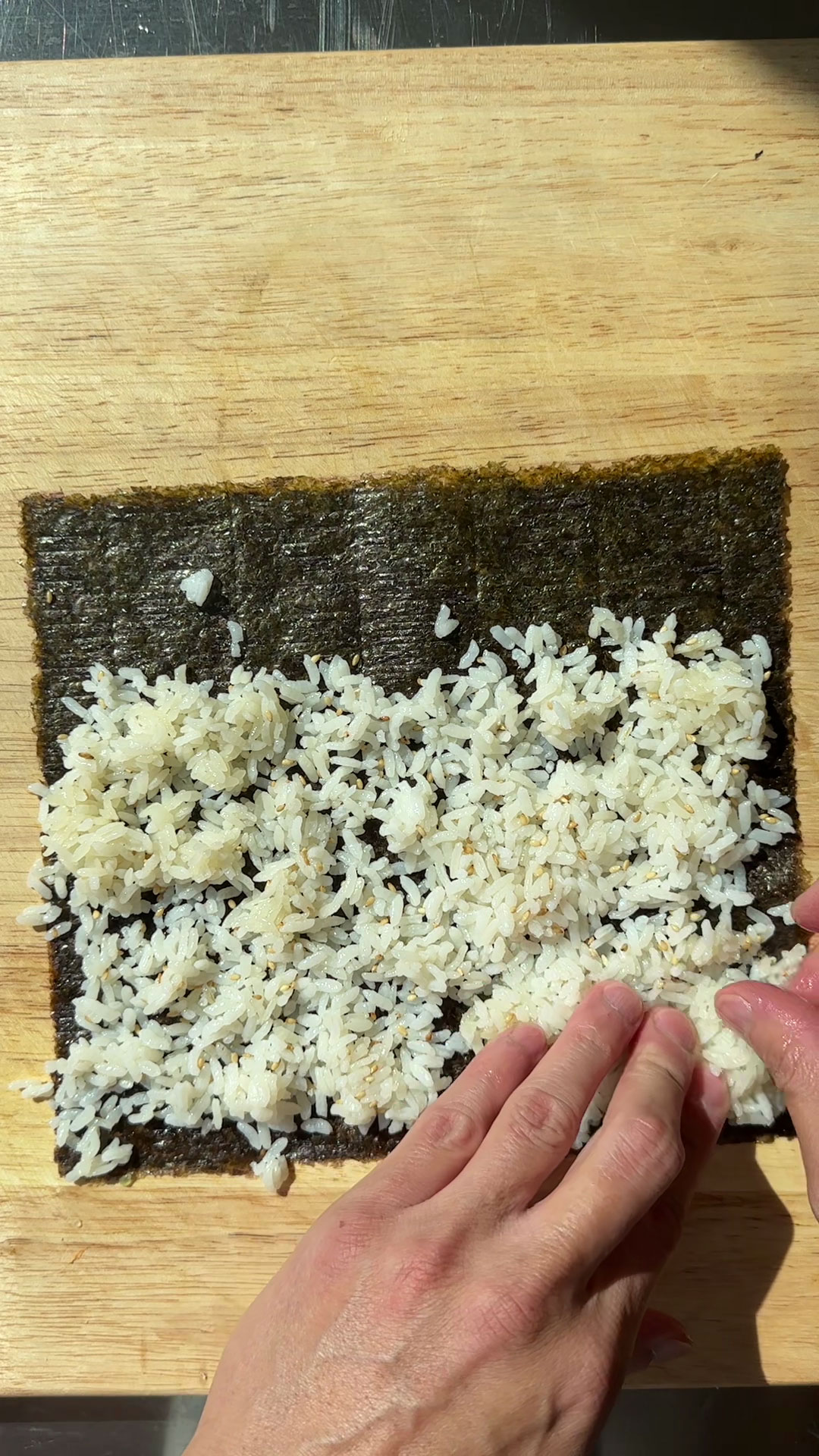
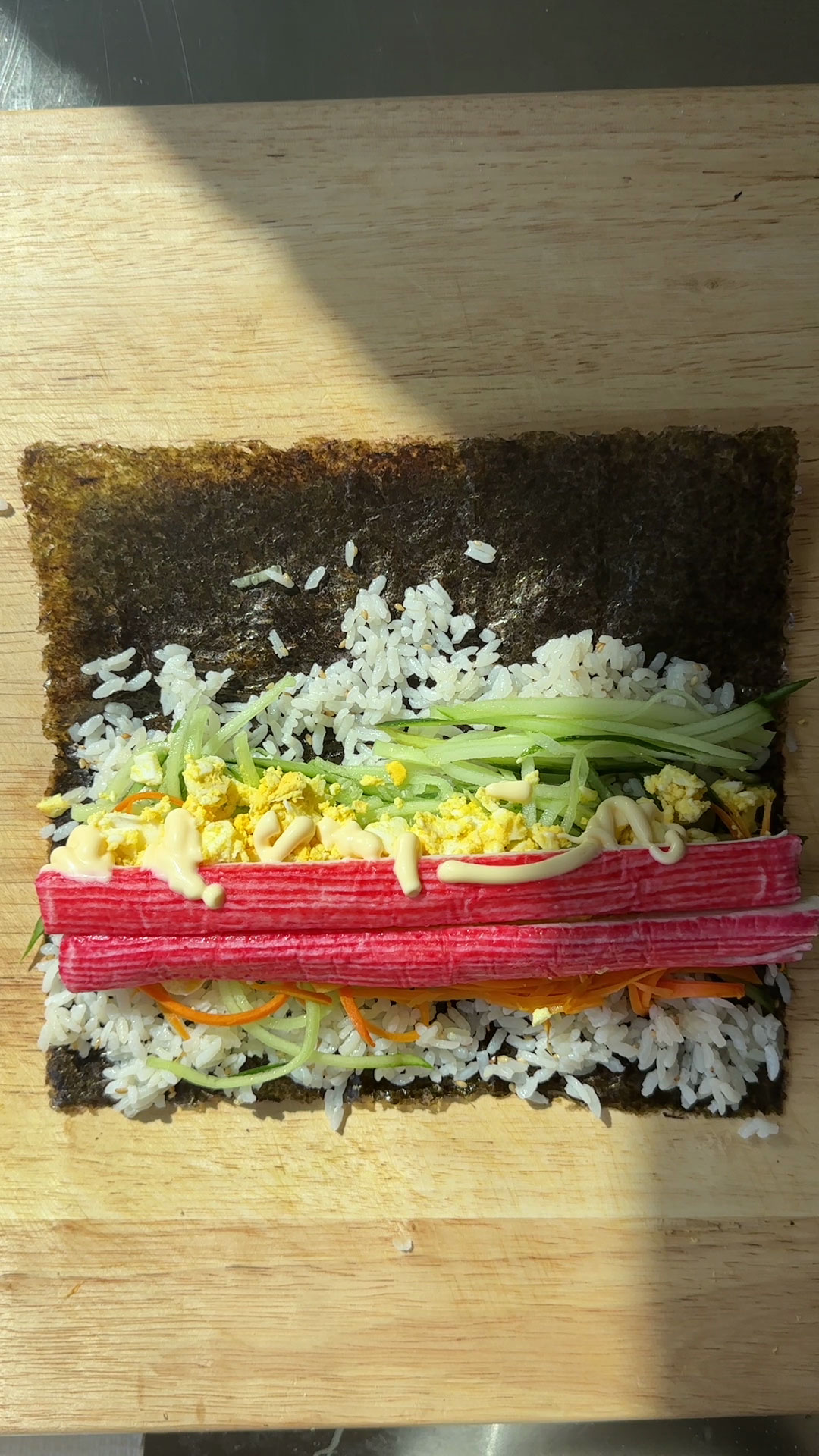
1. Prepare your ingredients. Once everything is set, you can focus on tucking and rolling continuously until you get the rhythm of it.
2. Make sure the smooth side of the nori sheet is outside, while the rough side is inside.
3. Spread seasoned rice flat from edge to edge of the nori sheet while leaving an inch empty on top to use as the lock later on. Use bits of rice in that empty part to serve as glue to lock the roll.
4. Place the protein and vegetables in the middle part of the rice so it can be tightly secured when you roll it later.

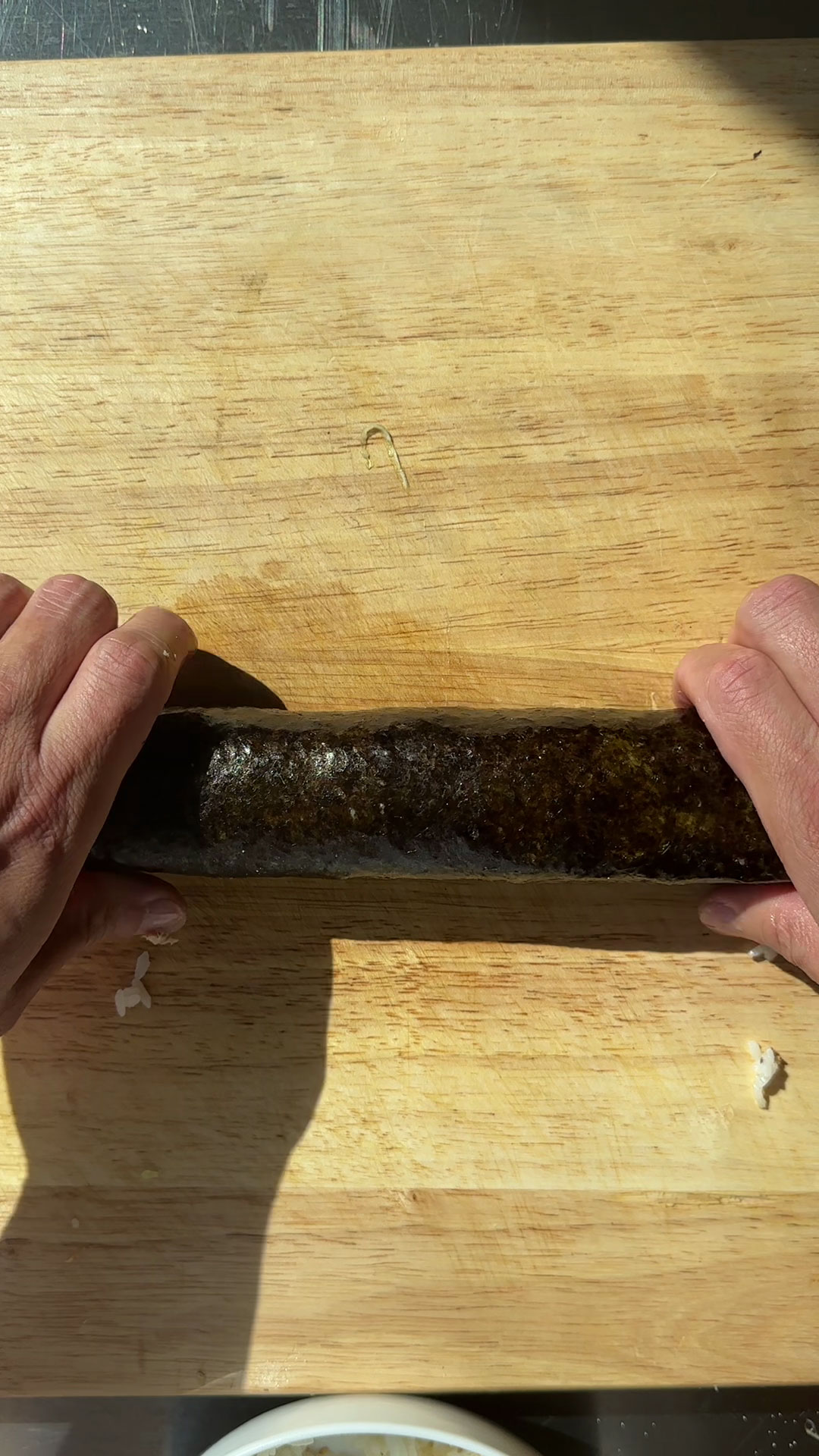
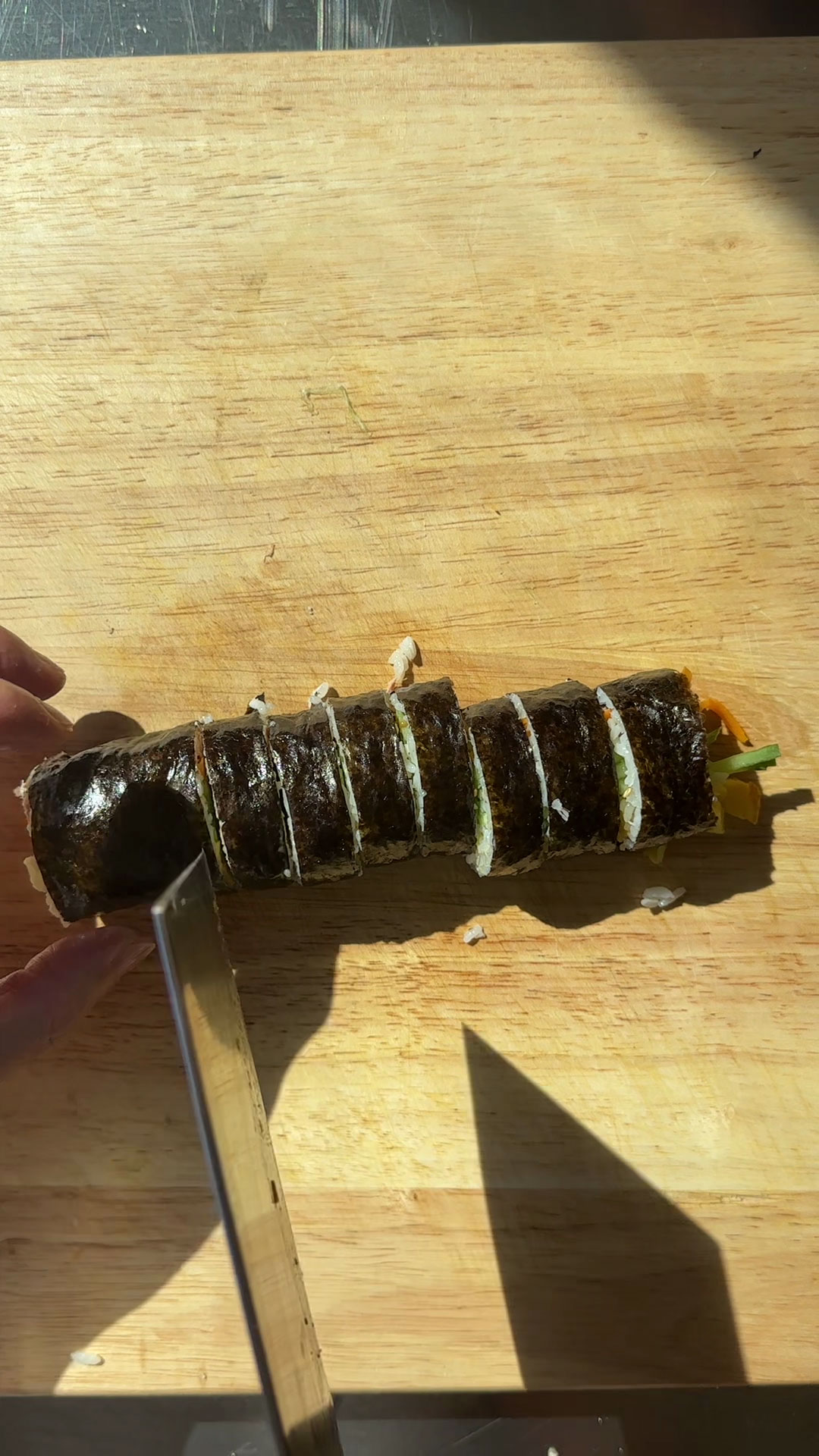
5. You can use a bamboo roller to roll the kimbap, but I personally don’t like to use one because it allows me to tuck the kimbap better. The key is to roll and tuck the kimbap slowly but surely. Tuck in every inch and roll as you go. Tuck gently, otherwise, it might pop!
6. Brush the kimbap with sesame oil and let it rest for a few minutes to hold together before slicing.
7. In slicing the kimbap, use a sharp wet or oiled knife and make big slice motions to ensure it cuts through easily. Slicing it back and forth might break the seaweeds and the whole roll.
Serving Kimbap

Some people may call this Korean Sushi. The difference really lies in the fact that Kimbap has a lot more elements and leans on the savory side, while Japanese sushi uses fewer ingredients and a variety of fresh/raw fish.
To serve, plate the kimbap beautifully before serving or place it in the bento box and eat on the go. It is recommended to consume it the same day as you made it. For any leftovers, it is preferable to keep them unsliced or slice them but rolled and tucked in a foil. Store in the fridge for a day or two only.
To reheat, you can microwave it or dip it in egg and then fry it in a pan. Whichever you go about it, kimbap does not really need any dipping sauce. However, it is perfect when paired with tteokbokki or kimchi.
Other Korean classics you may like:
- Korean Glass Noodles (Japchae)
- Black Bean Noodles (Jajangmyeon)
- Spicy Chicken Stew (Dakdoritang)
- Spicy Pork Stir Fry (Jeyuk Bokkeum)
- Korean Braised Beef Short Ribs (Galbi Jjim)
Make sure to leave a rating, a comment, or tag me on Facebook, Instagram, or Tiktok when you chop them up! Yeobosayo!
Classic Kimbap Recipe
Ingredients
Rice
- 5-6 sheets Seaweed Paper
- 500 grams Rice Cooked and cooled
- 2 tbsp Sesame Oil
- Salt To taste
- Sesame Seeds
Fillings
- 3 pcs Crabsticks
- 2-3 pcs Eggs
- 5-6 strips Pork, Beef, Ham, or Fishcake
- 1 pc Cucumber
- 1 pc Carrots
- Spinach Use more because it wilts
- 6 pcs Danmuji
- Salt To taste
- Sesame Oil For seasoning the veggies
- Sesame Seeds
- Vegetable or Canola Oil For sauteing
Instructions
- Season the rice with sesame oil, salt, and sesame seeds. Mix thoroughly and set aside.
- Crabstick: Defrost and slice in half.
- Eggs: Beat the eggs and cook a thin layer in a pan and slice it into strips. Or make a rolled omelette and slice it into strips.
- Meat: According to your preference, season the meat either with salt and pepper or bulgogi sauce.
- Cucumbers: Remove the seeds and slice julienne.
- Carrots: Slice julienne and saute for a couple of minutes and season with salt.
- Danmuji: Drain and slice into strips as needed.
- Spinach: Blanch and drain, then season with sesame oil, salt, and sesame seeds.
- Once the ingredients are prepared, lay the seaweed on a flat surface, smooth side down.
- Grab a handful of rice and spread it out evenly in the seaweed, but make sure to leave an inch at the bottom.
- Place the ingredients one by one, making sure that the strips that are whole (crabsticks, danmuji, etc) are all on the side while putting the julienned vegetables in the middle.
- Once all the ingredients are placed on top of the rice, roll, tuck every inch, and roll again until you are able to close the whole thing.
- Use small pieces of rice on the ends of the seaweed to serve as a lock for it.
- Coat each roll with sesame oil and let it rest for several minutes before cutting.
- After resting, wet or oil the knife and make big slicing motions to cut the kimbap.
- Plate or place in a bento box and serve. Garnish with sesame seeds. Enjoy!
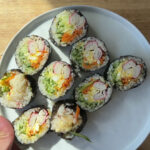


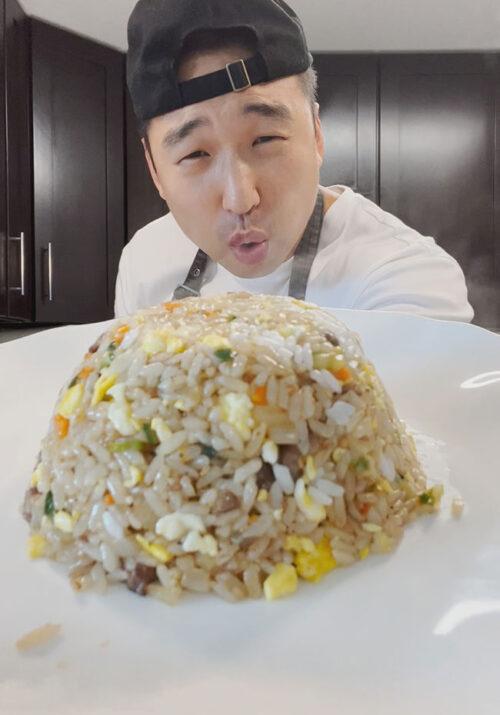


Leave a Reply